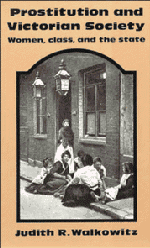Book contents
- Frontmatter
- Contents
- Preface
- Introduction: The Revolt of the Women
- Part I Prostitution, Social Science, and Venereal Disease
- 1 The Common Prostitute in Victorian Britain
- 2 Social Science and the Great Social Evil
- 3 Venereal Disease
- Part II The Contagious Diseases Acts, Regulationists, and Repealers
- Part III Two Case Studies: Plymouth and Southampton Under the Contagious Diseases Acts
- Epilog
- Notes
- Selected Bibliography
- Index
3 - Venereal Disease
Published online by Cambridge University Press: 01 June 2011
- Frontmatter
- Contents
- Preface
- Introduction: The Revolt of the Women
- Part I Prostitution, Social Science, and Venereal Disease
- 1 The Common Prostitute in Victorian Britain
- 2 Social Science and the Great Social Evil
- 3 Venereal Disease
- Part II The Contagious Diseases Acts, Regulationists, and Repealers
- Part III Two Case Studies: Plymouth and Southampton Under the Contagious Diseases Acts
- Epilog
- Notes
- Selected Bibliography
- Index
Summary
By the mid-Victorian period, many doctors and public officials came to assess syphilis as a serious health hazard for the British population. Newly available medical statistics on the incidence of venereal disease in the civilian and military populations had alerted public authorities to the problem and convinced them of the need for preventive measures – in particular, for the sanitary supervision of common prostitutes. The medical rationale for a regulation system was predicated on three assumptions: that syphilis was spread through promiscuous sexual contact with diseased prostitutes; that existing voluntary facilities for treating female venereal patients were ineffective as preventive and therapeutic institutions; that available diagnostic and therapeutic methods were adequate to carry out the medical provisions of a regulation system. A later generation of venereologists would dismiss mid- Victorian confidence in existing therapeutics as naive and misguided. At the time, however, doctors were only dimly aware of their limited ability to cure venereal disease. Nor could they foresee that syphilis would decline “spontaneously” over the course of the nineteenth century, irrespective of medical intervention or the operation of programs for the sanitary control of prostitutes.
Although conforming to accepted medical and clinical standards, the treatment of venereal disease was also governed by the dominant sexual and social ideology. This chapter will explore the various levels of meaning attached to the treatment of venereal disease. It will try to examine how class prejudice and the double standard of sexuality influenced medical treatment, and how these ideological influences shaped institutional facilities for the care of venereal-disease sufferers.
- Type
- Chapter
- Information
- Prostitution and Victorian SocietyWomen, Class, and the State, pp. 48 - 66Publisher: Cambridge University PressPrint publication year: 1980

